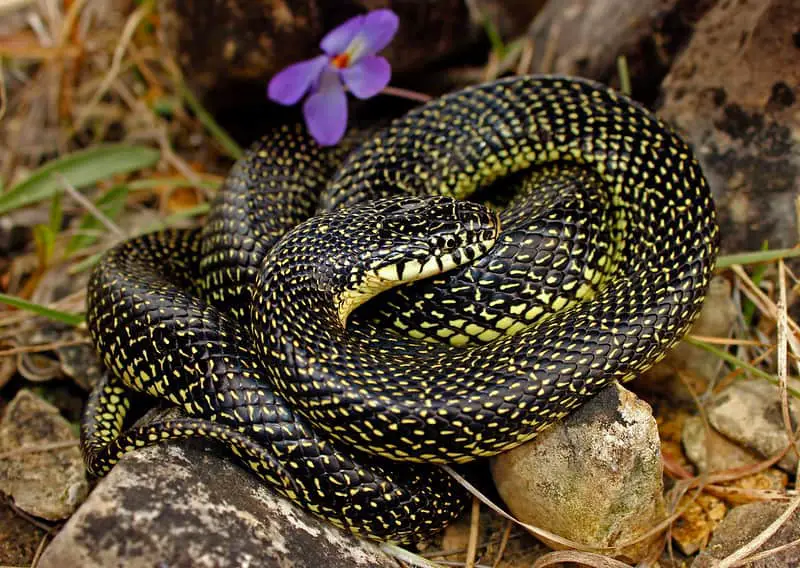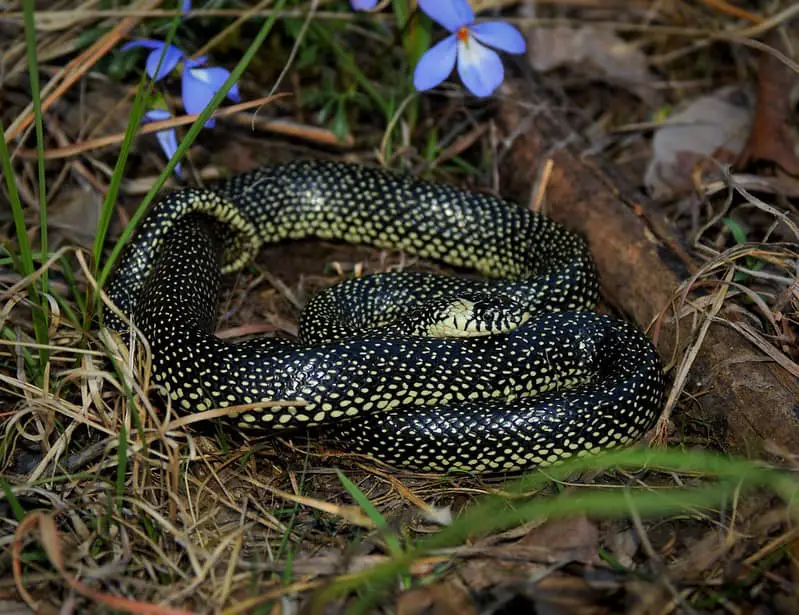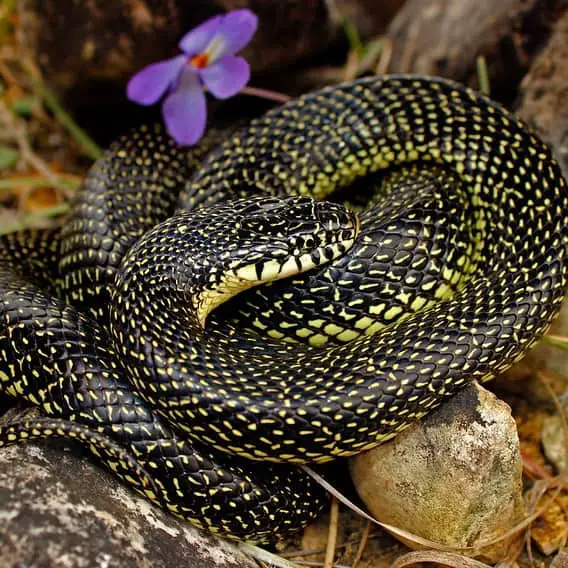The speckled kingsnake is a nonvenomous snake found in the Southern and Central United States. This large snake is most commonly black with a large number of small yellow spots on its body. The speckled kingsnake was previously considered a subspecies of the common kingsnake (Lampropeltis getula) and is still somtimes referred to as Lampropeltis getula holbrocki.
Description
As its common name suggests, the speckled kingsnake has a speckled color pattern. The base color of the snake is usually black, sometimes also dark brown. Almost every scale on its back shows a small yellow speckle. The belly of the snake is usually yellow or cream-colored.

The head of the snake is thin and its pupils are round. Since its range overlaps with the desert kingsnake, the two species often interbreed. Therefore, a definitive identification between the two species can be hard.
Size
Speckled kingsnakes are slightly smaller than their close relative, the eastern kingnsnake. Adults reach an average size of 35-50 inches (90-130 cm). The largest ever recorded specimen was 72 inches (180 cm) long.

Hunting Behavior and Habitat
The speckled kingsnake is most often found in wet habitats like swamps and close to rivers. It is a constrictor snake and preys on snakes, turtle eggs, lizards, amphibians and other reptiles.
It also feeds on venomous snakes such as rattlesnakes. To limit the risk of being bitten, the king snake attacks its prey by biting and fixating its head, thus preventing it from opening its jaws. It then gradually swallows its victim while still alive. During this process, it always keeps the prey’s head constrained. Depending on its range, various types of rattlesnakes and especially copperhead and cottonmouth snakes are a favorite prey item of the common kingsnake.
Like other kingsnake species, the speckled kingsnake is resistant to the venom of rattlesnakes and copperhead and cottonmouth snakes. So even if they get bitten while trying to eat them, they will most likely be fine. However, a large amount of venom or a large number of intense bites can still harm and possibly kill a king snake.
Bite
Kingsnakes are nonvenomous snakes and harmless for humans. Due to their docile behavior and beautiful black and yellow color patterns, speckled kingsnakes are a popular pet snake.
Speckled kingsnake range in the USA
The speckled kingsnake is found in the Southern and Central United States. It can be found in the following states: Alabama, Mississippi, Louisiana, Tennessee, Illinois, Kentucky, Iowa, Missouri, Arkansas, Texas, Oklahoma, Kansas, Nebraska, Colorado, and New Mexico.
Scientific classification of Lampropeltis holbrocki
- Kingdom: Animalia
- Phylum: Chordata
- Class: Reptilia
- Order: Squamata
- Suborder: Serpentes
- Family: Colubridae
- Genus: Lampropeltis
- Species: Lampropeltis holbrocki
The speckled kingsnake has been elevated to species level in 2009. Previously, it was considered a subspecies of the common kingsnake and is still sometimes refereed to as Lampropeltis getula holbrocki.
